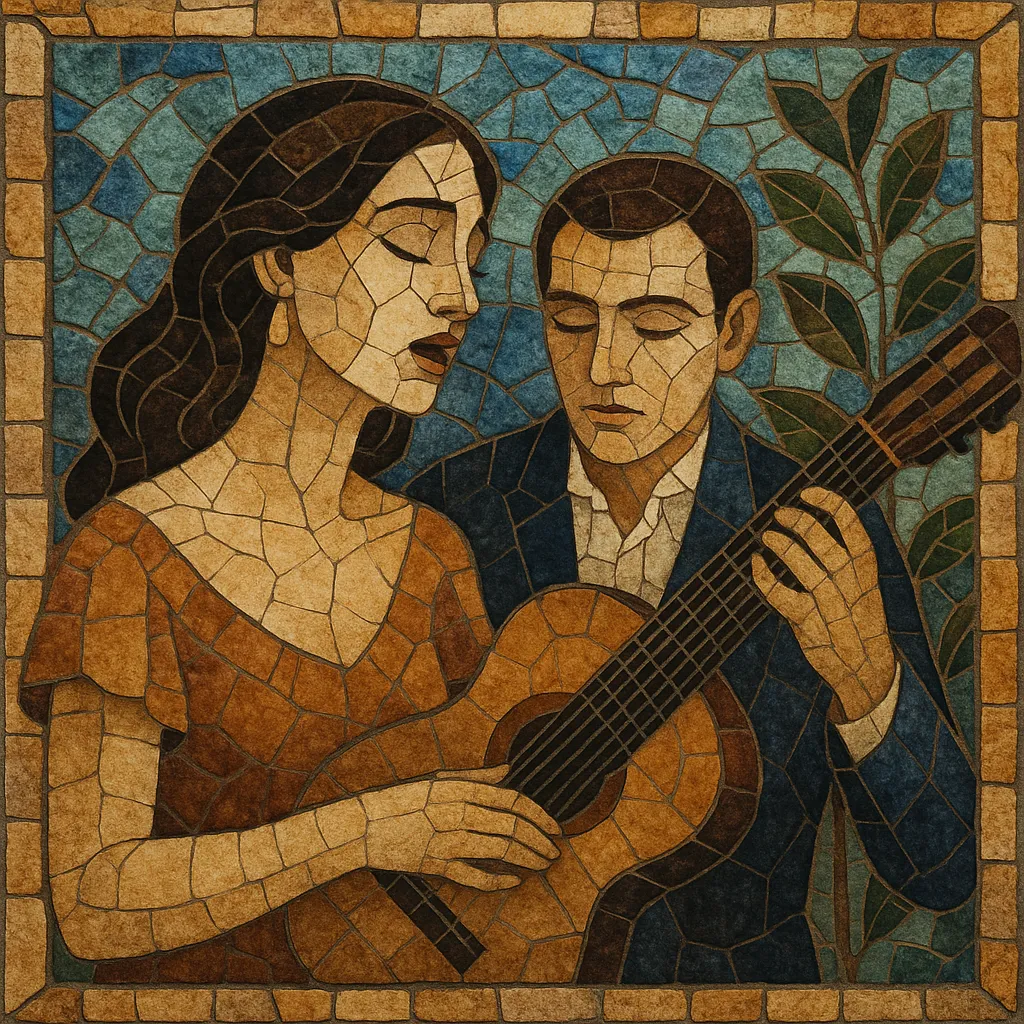Modinha is a sentimental art song that took shape in late-18th‑century Portugal and flourished in Brazil during the 19th century.
It is typically an intimate, lyrical piece for solo voice accompanied by guitar (violão) or keyboard, featuring graceful, cantabile melodies, expressive rubato, and ornamental turns derived from Italianate vocal style.
Texts dwell on love, longing, jealousy, and refined melancholy, often crafted by poet–musicians for salon performance and twilight serenades. Stylistically, modinha sits between European chamber song and local popular practice, absorbing Portuguese courtly taste, Italian opera influence, and Afro‑Brazilian color through contact with lundu.
The modinha emerged in Portugal in the later 1700s as a diminutive of “moda” (song), aligning with the salon and chamber-song culture of the Classical era. Poet–singers such as Domingos Caldas Barbosa popularized it in Lisbon’s elite circles, mixing Portuguese lyrical refinement with fashionable Italian vocal ornamentation.
As the Portuguese court and musicians moved to Rio de Janeiro in the early 1800s, the genre found fertile ground. In Brazil, modinha thrived in salons and serenades, often accompanied on guitar or piano, and became a preferred vehicle for romantic poetry and expressive singing. Brazilian composers elaborated its harmonic color and melodic ornamentation while absorbing rhythmic and expressive nuances from Afro‑Brazilian practices, particularly via proximity to lundu.
Throughout the 19th century, modinha coexisted with theatrical music and early urban popular styles. It became a marker of educated taste but also permeated street serenades (serestas). Its graceful melodic arcs, sighing appoggiaturas, and expressive rubato became hallmarks, while poets and composers wrote strophic songs that circulated both in print and by ear.
Though eclipsed by newer popular genres, modinha left a lasting imprint. Its lyrical expressivity fed into Brazilian seresta, informed early choro’s songful side, colored fado in Portugal, and prefigured the romantic canção lineage that later touched samba‑canção and aspects of MPB and bossa nova. In the 20th century, art‑music figures such as Heitor Villa‑Lobos curated and reimagined modinhas, preserving them within recital and classical contexts.


